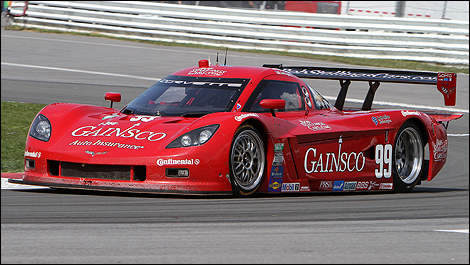Sep
13th
Stay connected Subscribe to our RSS feed
This wasn't ''major'' news in the world of professional auto racing since it didn't involve Formula 1, NASCAR or IndyCar. I'm talking about the merger between GRAND-AM and the American Le Mans Series (ALMS), the two endurance racing series in North America.
GRAND-AM cars make the annual trip to Montreal during the NASCAR weekend, while those in ALMS stop by the Canadian Tire Motorsport Park (aka Mosport) about an hour from Toronto.
These two series feature Le Mans-type machines with two or three drivers taking turns behind the wheel. Still, before the merger, ALMS and GRAND-AM were worlds apart. The former allowed factory teams like Audi to compete, while the latter exclusively fielded private teams and production cars.
The costs to run a program over a full season have skyrocketed in recent years. The cars have become more and more sophisticated, not to mention expensive to buy, race and repair. As a result, the starting grids have melted like tires in a burnout. When you can't even field 15 cars, things are pretty bad.
Much like IRL and ChampCar before them, GRAND-AM and ALMS were inevitably heading towards a merger. Of course, if you remember correctly, IRL swallowed ChampCar whole and imposed its own set of rules.
Expect the same to happen with GRAND-AM and ALMS. After all, the former is owned by the almighty NASCAR. The LMP1 cars that ALMS kept bragging about will return to Europe and the newly created series will feature advanced Daytona Prototypes.
Every merger has a winner and a loser; in this case, ALMS has clearly lost.
Officials claim that American fans will be thrilled with the action and the household names on the track including Corvette, Camaro and Mustang. That was actually part of the problem with ALMS: nothing but Audis, Peugeots, Hondas and the like.
We'll have to wait until 2014 to see how it all plays out.
GRAND-AM cars make the annual trip to Montreal during the NASCAR weekend, while those in ALMS stop by the Canadian Tire Motorsport Park (aka Mosport) about an hour from Toronto.
These two series feature Le Mans-type machines with two or three drivers taking turns behind the wheel. Still, before the merger, ALMS and GRAND-AM were worlds apart. The former allowed factory teams like Audi to compete, while the latter exclusively fielded private teams and production cars.
 |
| Photo: Grand-Am Series |
The costs to run a program over a full season have skyrocketed in recent years. The cars have become more and more sophisticated, not to mention expensive to buy, race and repair. As a result, the starting grids have melted like tires in a burnout. When you can't even field 15 cars, things are pretty bad.
Much like IRL and ChampCar before them, GRAND-AM and ALMS were inevitably heading towards a merger. Of course, if you remember correctly, IRL swallowed ChampCar whole and imposed its own set of rules.
Expect the same to happen with GRAND-AM and ALMS. After all, the former is owned by the almighty NASCAR. The LMP1 cars that ALMS kept bragging about will return to Europe and the newly created series will feature advanced Daytona Prototypes.
Every merger has a winner and a loser; in this case, ALMS has clearly lost.
Officials claim that American fans will be thrilled with the action and the household names on the track including Corvette, Camaro and Mustang. That was actually part of the problem with ALMS: nothing but Audis, Peugeots, Hondas and the like.
We'll have to wait until 2014 to see how it all plays out.
 The latest auto news, reviews, prices, product and vehicle releases.
The latest auto news, reviews, prices, product and vehicle releases.